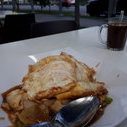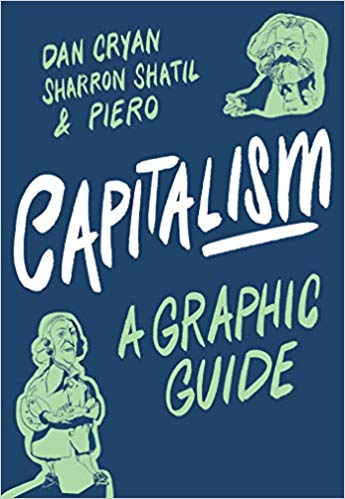Leaderboard
Popular Content
Showing content with the highest reputation on 12/08/19 in all areas
-
3 points
-
no need say old folks, even those who have tertiary education have this mentality. best example is loong loong's casino economy. despite the best efforts of some economists in pointing out the unsustainability of such an economic policy, majority of the country is still stupid enough to trust loong loong.2 points
-
kgk xdd shld see a pgd doctor instead of a dietitian. i suspect the reason u cannot gain weight is becos of a severe case of tapeworm infection.2 points
-
2 points
-
I will tell them if eat durian without smell it like I eat mala without the ma and la2 points
-
They bcm like angmo... Afraid of the smell2 points
-
He not dating ATB in his satki Honda Vezel sports kar so of coz he dating his right hand again wahaha Btw MU ish a dkg team wahaha!2 points
-
Bcos got this type of mentality from old folks that's huai bad policies gets approved without any challenge..2 points
-
2 points
-
2 points
-
2 points
-
2 points
-
2 points
-
malaysia exports frozen becos they havent obtained the chinese sanitary cert and the smell of malaysian durians r very much stronger than siam durians. to pass the sanitary test is easy but finding a shipper is the difficult part. not many shippers r willing to take the job due to the extra cleaning involved.2 points
-
2 points
-
https://shopee.sg/product/95757987/2166336609?smtt=0.0.9 https://shopee.sg/product/50116010/1719617492?smtt=0.0.92 points
-
then means the end is near for truelyasia farmers... but then again, tis is tiongland so poison milk type of saga might continue the demand for imported lewlian2 points
-
i dont think he can imaged that the ATB become housewife with a kids or baby2 points
-
1 point
-
confirm election is coming. to really solve the issue, it is time to relook the logic of streaming. best is to let the p6 students take exam to serve as a gauge to their potential and give a general secondary education b4 streaming them for a-level or poly.1 point
-
BEIJING (BLOOMBERG) - The unexpected drop in China’s exports in November shows one reason why the nation wants to agree on a phase one trade deal - US tariffs are hurting China’s exports at a time when global demand is already weak. Total exports in November dropped 1.1 per cent from a year ago, and to the US they were down 23 per cent, the customs administration said yesterday (sun). That was the worst result for exports to the US since February and the 12th straight monthly decline. Overall shipments had been expected to rise 0.8 per cent, as retailers and companies stock up before the Christmas shopping season. About 18 months of tit-for-tat tariffs have damaged both economies, with Chinese companies and American farmers selling less to the other side. When the two sides agreed to work on a ‘phase one deal’ in October there was hope that it would lead to a quick resolution of at least some of the underlying issues. However negotiations have stretched out and even if some of the tariffs are removed, both sides will be economically worse off than they would have been without the conflict. “Weak global demand, especially in major trading partners such as the US, EU and Japan, has dragged on export growth” and the weaker yuan in November cut the dollar value of exports, said Wang Youxin, a researcher at the Bank of China Institute of International Finance. “Looking ahead, exports depend on the progress of the trade talks. If the phase one deal is reached, and there’s rollback of tariffs, companies may become more confident and exports could rise.” The latest signs from the talks indicate that negotiators are moving closer to an agreement despite some sharp rhetoric and diplomatic spats over Xinjiang and Hong Kong. The US side expects a phase one deal to be completed before the Dec 15 deadline when new American tariffs on Chinese goods are scheduled to take effect, according to people familiar with the matter. If those tariffs were to go into effect on products like smartphones and computers, it would further damage China’s exports and raise prices for US consumers. Imports unexpectedly rose 0.3 per cent from a year earlier, marking the first year-on-year growth since April and compared with a 1.8 per cent decline forecast by economists. The rebound in imports shows there is a short-term stabilization in the Chinese economy, according to Larry Hu, head of China economics at Macquarie Securities Ltd. in Hong Kong. Some of that rise is due to a 2.7 per cent increase in imports from the US, which might be linked to increased goodwill purchases of American farm products ahead of a deal. The value of soybean imports was up 41 per cent from a year ago, although the government did not release information on which nations these were from.1 point
-
Mai gong jiao wei dkgb rah, chiu tok as if chiu find atb in the 1st place1 point
-
1 point
-
Recently very windy. Many old birds no come out fly. I also received a few wechat invites to visit. But need to save some money.1 point
-
1 point
-
1 point
-
The king of fruits in this region is a new favourite in China, largely sourced from Thailand. But whether that is a blessing or a curse for the Southeast Asian country depends on who you ask.03:01 CHANTHABURI, Thailand and GUANGZHOU, China: This restaurant’s signature dish is durian chicken pot. Its bestseller is spinach with durian fried rice. And it has many more of such dishes, like durian pickled vegetable fish. The founder of Qing Liu Durian Restaurant in Guangzhou, China, discovered the thorny fruit when he travelled to Singapore, Malaysia and Thailand more than a decade ago. Chen Zhenjiang found it “really tasty”, but many of his friends “wouldn’t touch raw durians”. “They’d eat durian products, like durian cake, durian pastry and durian tarts. It made me think why folks who shun raw durians would eat durian products,” says the one-time chef for the Qatari royal family. “So I opened this restaurant to make durian products for these people to try.” Chen Zhenjiang with CNA foreign correspondent Wei Du. There is no stink, he adds, because the fragrance goes into the food. And that is how he has been converting non-durian lovers — with “a little taste of durian products first”. “Many of my customers now love durians,” he says. Not only his customers but China’s growing middle class has developed a taste for exotic fruits like durian. Between 2009 and 2017, the country’s fresh durian imports grew fourfold, from US$124 million (S$169 million) to US$552 million. Last year, the growth exploded as Chinese consumers spent US$1.1 billion, double the amount in 2017. This was in no small part boosted by headlines about an Alibaba flash sale of Thai durians on its retail site, Tmall. Within the opening minute, 80,000 durians were snapped up. Thailand is the only country allowed to export fresh whole durians directly to mainland China, thanks to a 2003 trade agreement. Of its annual output of around 600,000 tonnes, 70 per cent last year went to the Chinese market. WATCH: China's billion-dollar love affair with durian (3:02) The trade is even triggering a real estate boom in its durian heartland, the series China’s Growing Appetite discovers. But is its domination of the Chinese market a blessing or a curse for the Southeast Asian country? DURIAN BONANZA Thailand’s biggest durian-producing region is Chanthaburi, an eastern province that accounts for 1.2 per cent of the country’s land mass but nearly half of its durian output owing to its favourable soil and climate. And more Chinese middlemen — from about 100 last year to more than 500 companies this year — are coming to do business, says Chalermpol Sakkham, the mayor of Tha Chang municipality in the province. “They know how to export fruit to China. They’ll make everything right to meet the government standard,” he says, full of praise for the durian trade with China. “It makes our lives better — not only the farmers in Chanthaburi but also the farmers who plant durians all over Thailand.” Selling durians is so lucrative that it is prompting other farmers to jump on the bandwagon. The price of rubber has also slumped over the last few years, so rubber plantations are increasingly being replaced by durian trees. Take, for example, Niwat Wongchanta and Jirakul Jetjumonong. The couple cut down their rubber trees five years ago to plant more than 100 durian trees, hoping to ride the tidal wave of Chinese demand. “Everyone was enjoying success from planting durians. We also want to be like them. Durian is our hope,” says Jirakul. Durian trees take a long time to mature, however, and they will reap their first fruits only next year. Niwat thinks they could get about a million baht (S$45,000) if all their trees produce durians. While he used to worry that durian might suffer a similar fate as rubber, he now thinks the market “won’t die anytime soon”. His wife agrees: “There are many Chinese middlemen now, so we’re confident.” Small farms like theirs, however, are becoming rare in Chanthaburi as mega plantations take over. Durian Land, for example, covers two square kilometres. And owner Chanogmon Viriyapanichpakdee would buy more land if it is nearby. “But the price now is increasing so much,” she says. Land prices are two to three times higher than six years ago, and she herself has thrice had Chinese investors offering her triple what she paid for her plantation. “In future I’ll get more,” she reckons. Around the province, there are plots of land newly cleared for durian trees and also the packing houses run by Chinese middlemen. These cash-rich businessmen go to the farms, scout for the best harvests, lock them in with an advance contract, hire workers for harvest time and export the durians to China. For local middlemen, the competition is more intense than ever before. “Even if you have a lot of money, it’s easier to buy gold than to buy durians,” says Viroon Oonja, who has been in the business for 20 years. “I still can run a business because I have a lot of friends, and I know farmers. We help each other find more durians.” GAME CHANGERS Someone else who has been in the durian business for a long time — 25 years — is Kanjana Yaemprai, the president of Queen Frozen Fruit. And when she introduced frozen durian to China three years ago, it was a game changer. “We put a stick in it. So it’s easy to carry, easy to buy and easy to eat,” is how her assistant and nephew Pakpum Bhagpabhakorn describes their product that looks like ice lolly and “doesn’t smell that much”. While frozen durians are not new, the company does a faster and deeper freeze (-60°C for eight hours) to reduce the ice crystals inside the fruit and give it a creamier texture. This has boosted the popularity of frozen durian and made the fruit available all year round to the Chinese. And it offers a way to export lower-grade durians. “We do contract farming, and we need to harvest all the fruits … in the farm,” says Pakpoom. “That’s why we built the factory … to make frozen durian.” Last year, the company exported 160 containers of the frozen durian to China, or 1.12 million durians. “(Chinese buyers) would just say, ‘I’ll take all of whatever you have,’” he adds. He is now “a bit” worried, however, because Malaysia has been allowed to export frozen whole durians directly to mainland China from this year. WATCH: Malaysia can now export frozen whole durians to China (2:06) “Nowadays, Chinese people know only about the Mao Shan Wang (or Musang King) durian,” he says. “We export much more than Musang King (suppliers do) to China, but (consumers) don’t know about the name of the durian from Thailand.” Thailand’s main durian export is the Monthong (Golden Pillow) variety, but branding is a “weak point”, he admits. “Maybe next year, we’ll find a partner who can (create) a stronger brand for Thai durian.” With or without branding, however, the durian is now a symbol of affluence to the Chinese. At the Jiangnan Fruit and Vegetable Market in Guangzhou, the price has risen from 55 yuan (S$10.70) a case to 480 yuan in the 20 years Peng Xueling has been selling durians. “In the past, we sold 100 to 200 cases a day; now we sell 700 to 800,” she says. “A lot of people have accepted the taste of durian.” In contrast, the Thais have tightened their belts. In the decade to 2017, their durian consumption fell to 20 per cent of what it used to be as farmers diverted local supply to exports. At the Iyara market on the outskirts of Bangkok — one of the country's largest fresh fruit markets — durian seller Adisak Prangthaptim remembers how it was before China’s appetite started growing. “The best durians cost 120 baht per kilogramme; the good-quality durians cost 60 to 80 baht,” he cites. “Now, lower-quality durians cost 200 baht; good-quality durians are exported to fetch higher prices.” Lamenting the issue of local affordability, he adds: “More Chinese consumers eating durian benefits the farmers and the middlemen. But it’s bad for the retailer.” As to whether Thai consumers are unhappy about buying durian less often, it depends on who you ask. As one of them says, “It’s okay because selling (durian) to other countries (means more) money coming in.” Money-spinner for Thailand, heading for China. Source: CNA/dp1 point
-
1 point
-
1 point
-
1 point
-
1 point
-
YINGKOU, China -- Anxiety over China's economy outside of its megacities appears to be boiling over after online rumors triggered two bank runs just days apart, a trend that sheds light on the increasingly tough business environments faced by the country's smaller local lenders. A massive crowd gathered outside a Yingkou Coastal Bank branch on Nov. 6, the sheer size of the line caught the attention of a man who gave his family name as Shi on his way home from work. When he arrived at his home in Yingkou, a port city in Liaoning province, his wife told him that she had read on the internet that the bank was in trouble. The rumors were based on a local newspaper report that a major shareholder in the bank was facing financial difficulties. While the huge crowd discouraged him from returning to the bank that day, he said, he returned to the branch two days later to close a 300,000 yuan ($42,500) fixed deposit. "We were on year four of a five-year account," he said. "I'm sad to miss out on the interest, but my wife's mother insisted so I had no choice." The man was not alone. A crowd at another Yingkou Coastal Bank branch on Nov. 6 prompted a local shop owner to get in line even though there were already about 1,000 people waiting to get in. "The last withdrawal happened at 3 a.m. the following morning," the shop owner said. The run depleted the branch's cash reserves, adding to customers' anxieties. "By the end, they were piling cash up a meter high along the wall behind the tellers," the shop owner said. Online rumors caused a run at branches of Yingkou Coastal Bank last month. (Photo by Issaku Harada) The majority of those who stormed Yingkou Coastal Bank were elderly. Many also lacked basic knowledge of banking regulations and protections, such as that deposits of up to 500,000 yuan per person are guaranteed by the Chinese government. Things only settled down after the vice mayor spoke to reporters and 120 police officers were deployed, arresting those who spread the rumors. The incident followed an Oct. 29 run on Yichuan Rural Commercial Bank, in the northeast of Shaanxi province, triggered by the arrest of its chairman the day prior. Bank runs happened largely in rural communities in 2015 and 2016, amid strong pressures on the Chinese economy. But concern now appears to be spreading to more urban population centers as well. Yingkou Coastal Bank and Yichuan Rural Commercial Bank both have capital adequacy ratios above what the government requires, and there is no reason to believe they are at risk of catastrophic failure. But they do face challenges. Yingkou Coastal Bank shares its home city with Bank of Yingkou, which is bigger both in terms of assets and number of branches. Yingkou Coastal Bank's lending to HNA Group, its top shareholder which is in the midst of a major restructuring, has surged recently, and its total assets have jumped 40% in the last year. The situation has some parallels to Baoshang Bank, which was nationalized after its top shareholder, Mingtian Group, was found to be funneling its funds. Meanwhile, Yichuan Rural Commercial Bank's credit rating was downgraded to A+ from AA- in late July. Its nonperforming loans rose to 2.95% of total lending at the end of 2018 from 0.54% two years prior. Regional banks are facing headwinds across China amid a protracted economic slump outside the big cities. Bank of Jinzhou, Hengfeng Bank and Bank of Jilin have all received assistance from the government or a larger bank, and the list is only expected to grow. The People's Bank of China conducted a liquidity stress test of 1,171 banks of varying sizes as part of a November report. It concluded 159, or 13%, would fail should economic growth fall to 4.15% and the yuan weakens 4.23% against the dollar. These institutions would be unable to secure liquidity even after selling government bonds and other prime assets, the report said. Because bank runs would directly impact their liquidity, Chinese authorities are expected to keep a close eye on the situation. https://asia.nikkei.com/Economy/Online-rumors-spark-runs-on-smaller-Chinese-banks1 point
-
this one make me laugh Many also lacked basic knowledge of banking regulations and protections, such as that deposits of up to 500,000 yuan per person are guaranteed by the Chinese government. as if they got so much cash to give back to them, that banking regulations and protections to deposits of up to 500,000 yuan. simple math like say they got 2 million customer and they got on average got 400k yuan saving that is around 154 trillion yuan. do the bank got 154 trillion yuan to give back? i wonder who math failed1 point
-
1 point
-
The meat industry has a warning for consumers: Beware of plant-based meat. That is the message behind a marketing campaign by the Center for Consumer Freedom, a public relations firm whose financial supporters have included meat producers and others in the food industry. In recent weeks the group has placed full-page ads in The New York Times and other newspapers raising health concerns about plant-based meat substitutes like the Impossible Burger and the Beyond Burger, which are designed to look, taste and even appear to bleed like real meat. (Photo: Impossible Foods) The ads call them “ultra-processed imitations” with numerous ingredients. “What’s hiding in your plant-based meat?” asks one ad featuring a sad face made of two patties and sausage. Another directs readers to a site that compares plant-based burgers to dog food. In November, the group’s managing director, Will Coggin, wrote an opinion piece in USA Today that labeled fake meats as ultra-processed foods that can spur weight gain, although the research on processed foods has not included plant-based meats. A few days later, the center’s executive director, Rick Berman, wrote an op-ed in The Wall Street Journal criticizing plant-based meats as highly processed and no healthier than meat. Its headline: “‘Plant-based meat’ is all hat and no cattle.” READ: Hungry girl goes on blind dates with meatless burgers – should she follow her conscience or heart? Impossible Foods, which makes a popular plant-based burger, said the campaign was misleading and fearmongering. The company says plant-based meat alternatives are better for consumers and better for the planet, requiring less land and water and producing fewer greenhouse gas emissions than meat from cattle. The new “disinformation” campaign, they say, is a sign that Impossible Foods’ mission – to disrupt the meat industry and replace animals in the food system – is working. “It’s a point of pride to have that organization come after us,” said Pat Brown, the company’s chief executive. “It’s hard to imagine a stronger endorsement.” (The Center for Consumer Freedom did not respond to requests for an interview.) Unlike other vegetarian meat substitutes, the new plant-based burgers are winning over meat lovers. The market research firm NPD Group says that 90 per cent of the customers purchasing them are meat-eaters who believe the products are more healthful and better for the environment, said Darren Seifer, an analyst at NPD, which recently predicted that plant-based meats will have staying power because of their popularity with millennials. “The two big brands, Beyond and Impossible, have replicated the burger experience without having to sacrifice the taste of the burger,” he said. “So now a lot of consumers feel like they have a healthier option, they are reducing the amount of meat they consume, and they just feel better about that.” But are plant-based meats really better for you than meat? It depends on how you eat them, said Dr. Frank Hu, chairman of the nutrition department at the Harvard TH Chan School of Public Health. Replacing a hamburger with a plant burger is not an improvement in diet quality if you chase it with French fries and a sugar-laden soda, Hu said. (Photo: McDonalds) For consumers trying to choose the healthiest option, Hu said studies comparing the metabolic effects of eating beef burgers versus plant burgers are currently underway. In the meantime, he considers the meat substitutes “transitional foods” for people who are trying to adopt more healthful diets. In August, Hu, along with a group of health and climate experts, published a report in JAMA that explored whether plant-based meats can be part of a “healthy low-carbon diet.” Studies show that replacing red meat with nuts, legumes and other plant foods can lower mortality and chronic disease risk, but it’s not possible to extrapolate that processed burgers made with purified soy or pea protein will have the same health benefits, said Hu. Impossible Foods and Beyond Meat say the building blocks of their burgers are plants. The Beyond Burger has about 18 ingredients, including purified pea protein, coconut and canola oils, rice protein, potato starch and beet juice extract for coloring. Beyond Meat says it uses no genetically modified or artificially produced ingredients. The Impossible Burger is made with similar basic ingredients but it gets its protein largely from soy and potato, and it uses an iron-containing compound from soy called heme to enhance the burger’s meaty flavor. Both products use methyl cellulose, a plant derivative commonly used in sauces and ice cream, as a binder. (Photo: Impossible Foods) Compared to a beef patty, the Impossible and Beyond burgers have similar amounts of protein and calories, with less saturated fat and no cholesterol. They also contain fiber; real meat does not. But compared to real beef, the two plant-based burgers are considerably higher in sodium, containing about 16 per cent of the recommended daily value. An uncooked four-ounce beef patty has about 75 milligrams of sodium, compared to 370 milligrams of sodium in the Impossible Burger and 390 milligrams in the Beyond Burger. (Photo: Burger King) This fall, Burger King said it had its most successful quarter in four years, driven by sales of its plant-based Impossible Whopper. Dunkin’ Donuts announced it was rolling out a breakfast sandwich made with Beyond Meat sausages in 9,000 of its stores after a successful trial run in New York City. More than 50,000 grocery stores and restaurants, including fast food chains like Subway, White Castle, KFC and Carl’s Jr., carry products from Beyond Meat or Impossible Foods. Despite the popularity of plant-based burgers, beef burgers are still overwhelmingly the more popular choice at restaurants. Americans purchased 6.4 billion beef burgers at quick service restaurants during the 12 months that ended in May, compared to 228 million plant-based burgers in the same period. While meat consumption in America is at an all-time high, many Americans have shifted from eating beef to poultry. In the past three decades, beef intake has fallen by about a third, while chicken intake has more than doubled and pork intake has remained fairly steady. Studies show that cost, convenience and health concerns are among the top reasons Americans have cut back on beef. (Photo: Impossible Foods) But the health messages about red meat have been confusing. Earlier this year, a group of scientists challenged decades of nutrition advice, saying that warnings linking red meat consumption to heart disease and cancer are not backed by strong scientific evidence, though it was later revealed that the study’s lead author had past research ties to an industry group whose members include fast food companies and a beef processor. Meat producers are taking the fight against fake meat to lawmakers. At least 25 states have introduced bills making it illegal to use the words “beef” or “meat” on products made from plant ingredients or cultured meat that is grown in a lab. Missouri became the first state to pass such a law last year, which was initially proposed by the Missouri Cattlemen’s Association. In October, Rep Roger Marshall, a Republican from Kansas and the top recipient of livestock industry donations in the House, introduced a federal bill that would require companies to put the word “imitation” on their plant-based meat products. The bill calls for the products to carry a statement on their packages “that clearly indicates the product is not derived from or does not contain meat.” Marshall, an obstetrician, said he introduced the bill after hearing from constituents. Patients of his told him they were confused about the health benefits of plant-based beef substitutes, and beef producers told him they were frustrated that the products are sold in grocery stores next to ground beef. “Kansas has a very large beef industry and they said, ‘Why are we allowing this fake meat in the meat department?’” he said. Brown, the chief executive of Impossible Foods, said his company’s mission is not to convince consumers that the Impossible Burger is the most nutritious food they can eat. It is simply to persuade people who want a “cow burger” to eat an Impossible Burger instead. “The niche that this fills is not the same niche that a kale salad fills,” he said. “If you’re hungry for a burger and you want something that’s better for you and better for the planet that delivers everything you want from a burger, then this is a great product. But if you’re hungry for a salad, eat a salad.” https://cnalifestyle.channelnewsasia.com/dining/plant-based-impossible-meat-121578541 point
-
From what i know some farmers in hainan is growing them.1 point
-
1 point
-
1 point
-
1 point
-
do share what you buy and take some pictures thanks1 point
-
Review from amazon : Capitalism shapes every aspect of our world, beyond just our economic structures; it moulds our values and influences the way we write laws, wage wars and even conduct personal relationships. From its beginnings to the present day, Capitalism: A Graphic Guide tells the story of capitalism’s remarkable and often ruthless rise, evolving through strife and struggle as much as innovation and enterprise. This non-fiction graphic novel explores the key developments that have shaped our modern world, from early banking to the Opium Wars, financial crashes, the rise of service economies and concerns about sustainability. It also introduces us to the leading proponents and critics of capitalism, providing both a theoretical and practical understanding of this fascinating subject.1 point
-
1 point
-
1 point
-
1 point
This leaderboard is set to Singapore/GMT+08:00










